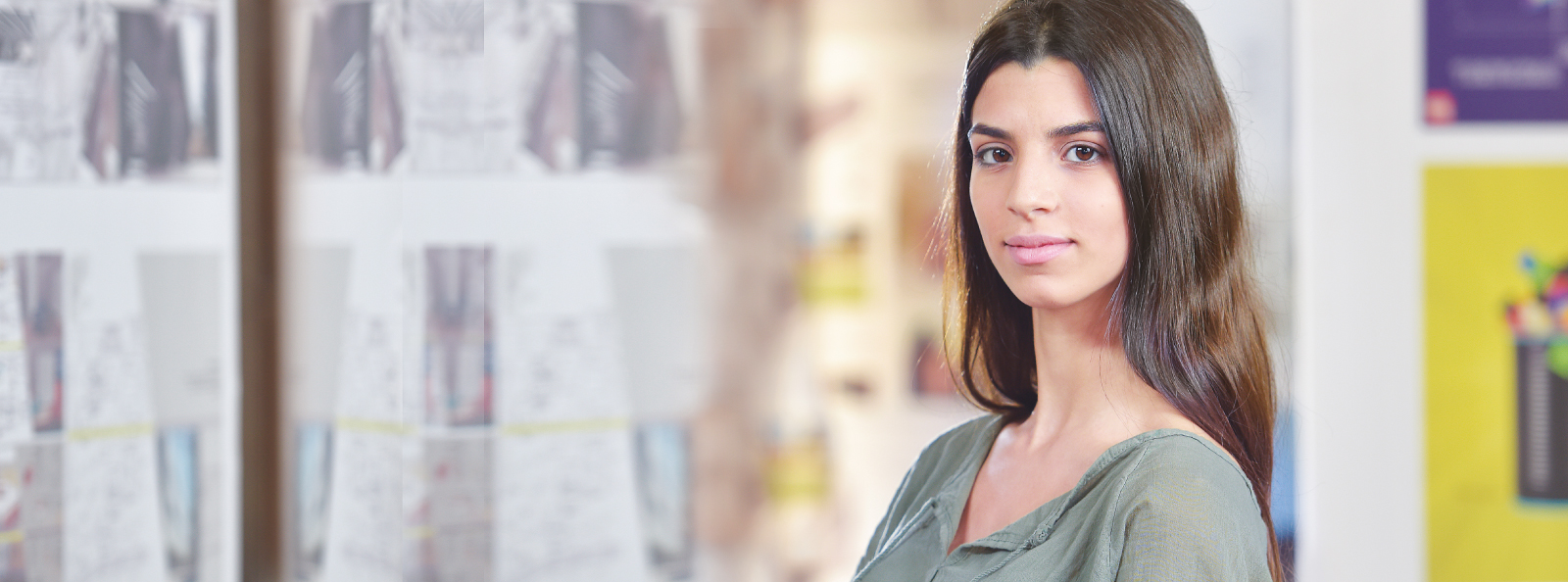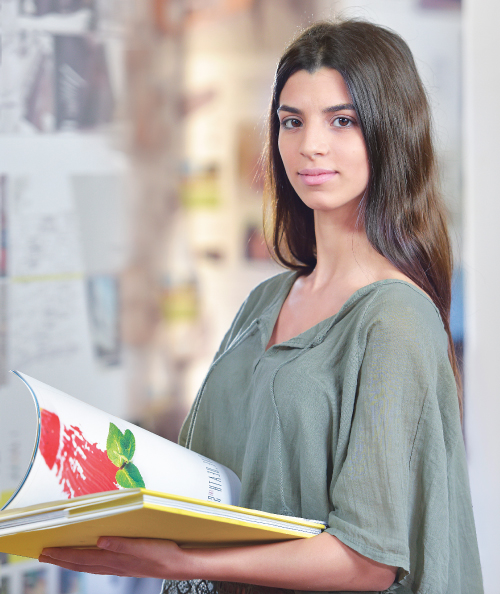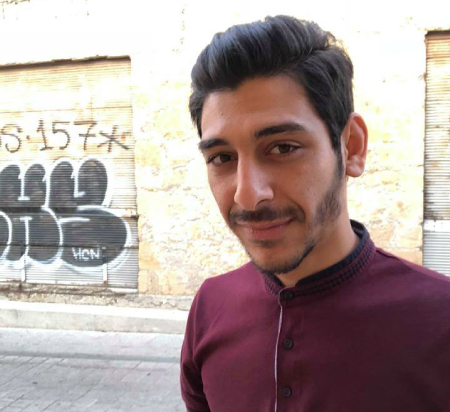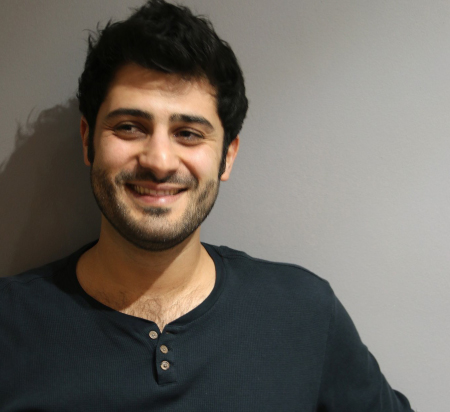PROGRAM DETAILS
Duration18 months (full time)
Fees
€9,000 for whole program
LanguageEnglish
CampusNicosia
The MA in Visual Art program encourages students to challenge and explore conventional boundaries of various art and design disciplines, borrowing and experimenting creatively. Interdisciplinary methodologies are investigated and applied aiming in the advancement and development of new and novel art and design discourses. The program encourages and respects critical theory as well as in depth understanding of material and the practice of making. Furthermore, it offers a close relation with the creative and professional industries and provides opportunities for collaboration on real life local and international projects. Emphasis is placed upon pushing forward critical discourses in a challenging and provocative way, indicating relations to key discourses within the contemporary arena, as well as building upon a personal visual language that is both informed of current trends and innovative.
The program aspires to bring together students from diverse backgrounds that will have the opportunity to interact and develop skills necessary to envision a rapidly growing interdisciplinary culture.
Committing to a balanced input of theory and practice, the program fosters professional initiative, self-motivation and ambition, desire for positive social change, cultural responsibility and environmental ethics as well as imaginative, out-of-the-box creativity.
Tailored to the individual needs and skills of the students, the program gives them the opportunity to develop creatively, to find new experimental applications of their ideas and meet their individual aspirations. Through a series of self-initiated projects and personal tutorials the students are enabled to develop their creative identity and individuality. In doing so students are encouraged in bringing into context their real-life experiences, skills and practice.
Conceptual and theoretical issues will be relatively brought up, studied and tackled through courses of Visual and Critical Thinking and Contextual Studies. These courses are primarily engaged with the systematic study of core notions, concepts and disputes of and around critical theory, philosophy, the art and design history, aesthetics and relative studies. Furthermore, research will be promoted by means of encouraging the development of collaboration between the university and other academic and social partners on a local, regional (Mediterranean) and international level. The establishment of such networks is critical in acquiring experience, achieving effective exploitation of research results, resulting in good practice examples and innovation. In order to build a strong art and design research culture with proficient methodological skills the program offers the course of Research Methods that will introduce and provide students with all necessary and relevant competencies and tools in order to encourage and engage them into such a culture. Students will also be introduced to a variety of subjects and media through the art and design electives, that have been methodically structured to provide students with in-depth understanding of primal issues and crucial lines of enquiries in the Art and Design Field;
The program aspires to bring together students from diverse backgrounds that will have the opportunity to interact and develop skills necessary to envision a rapidly growing interdisciplinary culture in art and design practices. Committing to a balanced input of theory and practice, the program fosters professional initiative, self-motivation and ambition, desire for positive social change, cultural responsibility and environmental ethics as well as imaginative, out-of-the-box creativity.
The vision of the MA program is to motivate, inspire and encourage students to approach art and design through non-conventional understandings, beyond predictable applications and expectations of what design might be and push the development into new forms and applications borrowing expertise from graphic, interior and media design as well as the fine arts. The program aspires for students to explore that area between design and art which will grand them the opportunity to develop their thinking, ideas and even their personalities beyond conventional standards.
The program is anchored in the area of Fine Art and Applied Art, allowing each individual student to follow the areas of expertise provided by two major streams, which reflect the needs of upcoming new industries:
1. Interdisciplinary Design
2. Contemporary Art Practices
INTERDISCIPLINARY DESIGN
Interdisciplinary Design students will be introduced to the applied art field through an awareness about fields such as space and form alternatives, curatorial and displaying practices, object and materiality issues, installation and art aesthetics, new media, moving image, animation, web design, alternative visualizing methods, interactivity and materiality issues. In all cases students will be introduced to the technologies that precede these topics. Students attending this pathway will have the opportunity to work on real life projects, work and co-operate with active professionals from the design industry, deliver projects for clients coming from the public or private sector, as well as investigate their professional opportunities in a network of design related individuals, agencies and industries.
CONTEMPORARY ART PRACTICES
Through this pathway, the students are introduced and ‘guided to’ contemporary methods, techniques, approaches and practices of the fine art field through systematic exploration and work development primarily in the art studio. These fundamental courses will enable students to locate practical areas of study, to experiment and resolve problems relating their medium, materials, concepts and methods through ongoing practice, group and one to one tutorial, critiques, exhibition visits as well as local and international project initiations. In addition, the students will be presented with a series of talks and presentations by renowned artists, theorists, curators, art historians, thinkers and cultural producers in order to become engaged in contemporary disputes, subjects and art processes.
The program is strongly engaged in this very interrelation of contemporary cultural debates to contemporary art practices and for this very reason the students will be further exposed to critical and current disputes as reflected in the art processes, applications, mediums and materials through the courses of Visual Processes and Applications; a course that examines critical positions, histories and renderings/interpretations of the art object through
The specific goals of the program are:
1. To offer an innovative combination of fundamental and applied training in order to provide graduates with essential knowledge of global, comparative and transnational expertise and skills related to the practice of fine and applied arts.
2. To emphasize the application of knowledge by concentrating on research work and by providing a practical focus for MA theses.
3. To provide high-quality academic education and contemporary scientific knowledge in visual arts, while focusing on the contemporary culture, so as to ensure the preparation of highly qualified practitioners and scholars.
4. To educate students in interdisciplinary and critical perspective of the production, dissemination and the role of art and design practices.
5. The train students in research and prepare them develop as researchers, in the various fields of visual arts from interdisciplinary design to contemporary are practices.
6. To inject a sense of excellence in and appreciation of the visual arts in local, regional, national and global contexts, both past and present and to foster a critical appreciation of the fine and applied arts disciplines.
The language of instruction is English.
- Assimilate the philosophy and values which condition interdisciplinary design and to understand the processes and factors that lead to its development.
- Analyze and discuss the contemporary global, regional and local design issues and exhibit critical and creative thinking about their impact on aesthetic and cultural activities.
- Indicate and carry an in-depth practice-based research that reflects on advanced critical theory and original and creative visual language.
- Demonstrate skills and experiences necessary to involve in practising design within the areas of two dimensional and three-dimensional space, form/ function and formation, screen and print/moving and static platforms, traditional and experimental techniques, design materiality and immateriality.
- Apply the methodologies, discourses and analysis needed to enforce interdisciplinary art and design applications, thus achieving high level of execution and finishing.
- Utilize effectively state-of-the-art software tools embracing the impact of technology and new media in the area of contemporary art and interdisciplinary design.
- Promote the development of practices which facilitate sustainability, social and cultural perspectives.
- Manage information about the main local and international market opportunities and channel directly their professional practices in unique and innovative channels.
- Apply the necessary knowledge so that they can become chartered in the professional arena and association.
- Demonstrate the ability for using research results in education, within their professional environments and in society.
- Master skills and experiences that reflect on appropriate subjects and themes of the wider area of interest, in ways that challenge conventional boundaries and re-approach in unpredictable ways, traditional methods and mediums.
- Develop and execute a self-initiated project that makes an original contribution to the field.
The majority of the employment opportunities lie within the local creative industries. Graduates from the MA program in Visual Arts may go into managerial creative posts such as Creative Coordinators, Cultural Producers, Design Managers or Art Directors in Graphic Design agencies, Interior Architecture, Art and Design related posts, as well as the media and will be working towards hybrid forms of visual and social research and creative production.
Graduates can also pursue opportunities to initiate artist led, community-based projects or postgraduate doctoral studies.
Admission Requirements
All perspective candidates are admitted to the MA program if they satisfy the following criteria:
a. An accredited BA Degree from an an accredited institution of an Art and Design field.
b. Good knowledge of the English language
All perspective candidates must sit for an interview and a portfolio presentation/review. All interviews are conducted by a Selection Committee which includes the program coordinator (chair) and two faculty members.
The most important criteria for the selection of the MA students is based on the candidate’s ability for critical thinking and creativity, the visual intelligence, literacy and competency of the candidates as well as the candidate’s’ art and design visual language articulation and skills.
Recognition of Prior Learning
There are no specific arrangements for recognition of prior learning for this Program. Candidates can be granted transfer credits according to the general arrangements for recognition of prior learning of the University.
Contemporary Art Practices
Module Group
ECTS
The student must successfully complete 30 ECTS, from the following list of modules:
| No. | Code | Name | ECTS | Hours / week |
|---|---|---|---|---|
| 1 | MMM517 | MASTERS DISSERTATION | 30 | 0 |
Total
90
Semesters
ECTS
| No. | Code | Name | ECTS |
|---|---|---|---|
| 1 | MVA501 | RESEARCH METHODS | 10 |
| 2 | MVA503 | VISUAL AND CRITICAL STUDIES | 10 |
| 3 | MVA504 | STUDIO PRACTICE I | 10 |
| TOTAL | 30 |
| No. | Code | Name | ECTS |
|---|---|---|---|
| 1 | MVA505 | STUDIO PRACTICE II | 10 |
| 2 | MVA506 | CONTEXTUAL STUDIES | 10 |
| 3 | ELECTIVE COURSE | 10 | |
| TOTAL | 30 |
| No. | Code | Name | ECTS |
|---|---|---|---|
| 1 | MMM517 | MASTERS DISSERTATION | 30 |
| TOTAL | 30 |
Interdisciplinary Design
Module Group
ECTS
The student must successfully complete 30 ECTS, from the following list of modules:
| No. | Code | Name | ECTS | Hours / week |
|---|---|---|---|---|
| 1 | MMM517 | MASTERS DISSERTATION | 30 | 0 |
Total
90
Semesters
ECTS
| No. | Code | Name | ECTS |
|---|---|---|---|
| 1 | MVA501 | RESEARCH METHODS | 10 |
| 2 | MVA503 | VISUAL AND CRITICAL STUDIES | 10 |
| 3 | MVA507 | DESIGN MANAGEMENT AND PRACTICES | 10 |
| TOTAL | 30 |
| No. | Code | Name | ECTS |
|---|---|---|---|
| 1 | MVA502 | ADVANCED RESEARCH APPLICATIONS | 10 |
| 2 | MVA506 | CONTEXTUAL STUDIES | 10 |
| 3 | ELECTIVE COURSE | 10 | |
| TOTAL | 30 |
| No. | Code | Name | ECTS |
|---|---|---|---|
| 1 | MMM517 | MASTERS DISSERTATION | 30 |
| TOTAL | 30 |
The delivery of the program of study is supported by the following members of staff:
| Rank | Name |
|---|---|
| Professor - Programme Coordinator | Prof. Costas Mantzalos |
| Associate Professor | Ms. Artemis Eleftheriadou |
| Associate Professor | Mr. Demetris Kokkinolambos |
| Associate Professor | Mr. Constantinos Kounnis |
| Associate Professor | Mr. Nicolas Lambouris |
| Associate Professor | Mr. Panayiotis Michael |
| Associate Professor | Ms. Hourig Torossian |
| Assistant Professor | Dr. Anna Louise Merry |















